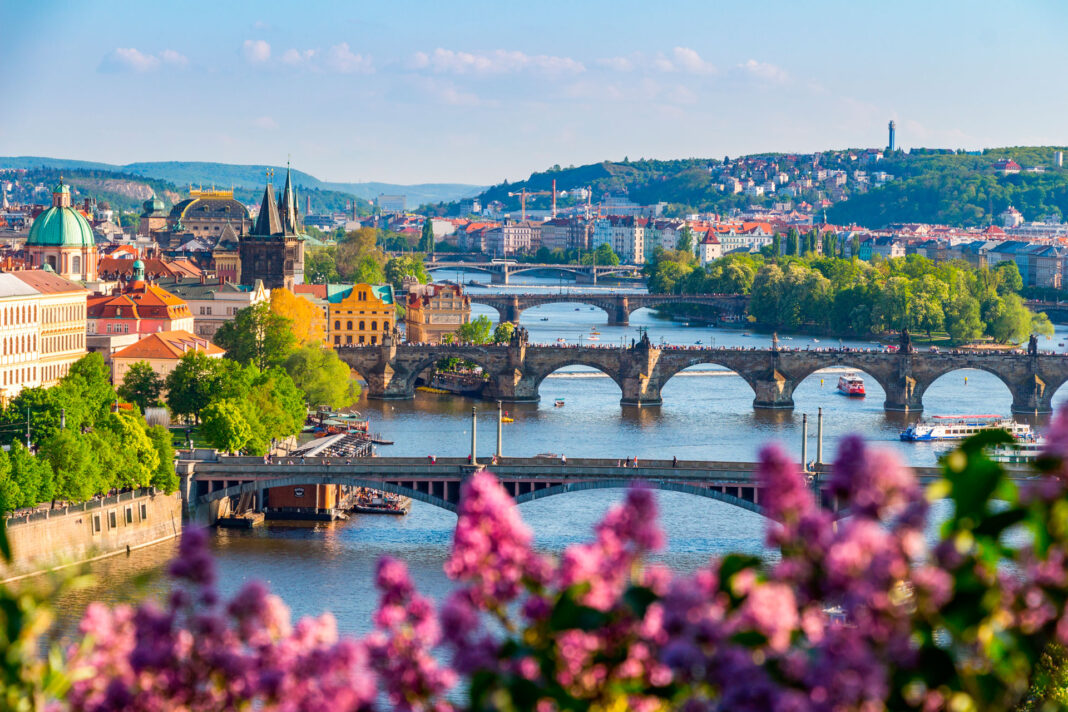Aside from the liberation movement of 1968, spring has always been the best time of year to visit one of the jewels of Central Europe
Spring is the perfect time of year to experience the magic of Prague. Temperatures are mild, there are no crowds, prices are reasonable, and by mid-April, the trees and gardens are in full bloom. The Czech capital is one of the most beautiful cities in the world. No more so than in spring when it blooms with magnolias bursting with white and pink blossoms, lilacs, cherry blossoms, tulips, jasmine and roses perfuming the air.
Prague comes alive in the spring. Gardens and castles reopen, and the calendar brims with celebrations such as the Awakening Baroque Music Festival (April 6th) in Kutná, Hora. Witness the unique Czech equivalent of St. Valentine’s Day on May 1st when couples climb to the top of Petřín Hill or join the Liberation Day festivities on May 8th, celebrating the liberation from fascism (1945) with a parade through the streets of the town centre, an open-air concert and fireworks.
May also brings the Rosé Wine Festival at Prague Castle, Villa Richter or St. Wenceslas Vineyard. The Malá Strana district hosts the Fringe Festival with theatre, comedy, music, dance, and storytelling. Other events at this time of year include the RumFest, the great Prague Asian Festival, the Prague Spring Festival, and Open House, the world’s largest architectural event that takes place every year in more than forty-two cities around the world, throwing open the doors to visitors in forty buildings in Prague. This year’s Prague Marathon culminates in the Old Town Square (Staroměstské náměstí) and falls on May 5th.
Prague’s charm goes beyond the festivals. Iconic landmarks beckon with a long list of must-sees: the Old Town Square, with its astronomical clock, the majestic Gothic marvel of the Charles Bridge, Prague Castle and St. Vitus Cathedral, the Jewish Quarter (Josefov) and its cemetery, the Belvedere Gardens, St. Nicholas Church with the Infant Jesus of Prague, and a boat trip on the Vltava River.
Other sights worth seeing include the narrowest street in the world, the Kafka Café, the Dancing Houses by architect Frank Gehry, the spellbinding Black Light Theatres, the Powder Tower with its panoramic vistas and Golden Lane, once the meeting ground for the city’s alchemists. Time permitting, two nearby places perfect for day trips are the enchanting spa town of Karlovi Vari and the medieval marvel of Český Krumlov, a UNESCO World Heritage Site.
Apart from Prague’s remarkable history and architecture, there’s the other heart of Prague – its legendary beer scene. But before embarking on your tour of unmissable breweries, it’s important to remember that 10º, 11º or 12º does not indicate alcohol content, as in other countries, but the percentage of sugar extracted before fermentation. Explore varieties like Svtle (light), Polotmavé and Rezané (amber), Trnavé (dark) and Tmavé (black). Another essential tip is to learn the lingo: Malé Pivo is small; Velké or Pulitr means large; and Tuplak is one litre.
Ready for your adventure? Grab your map and mark these gems on your GPS: U Fleku; U Zlateho Tygra; U Hrocha and U Cerneho Vola (near the castle); U Kocoura, Pivnice U Glaubicu and Pivnice U Glaubicu (Malá Strana district); U Cerneho Orla; Basta Bansethú (own production); Kolkovna (Pilsner Urquell, Jewish quarter); Zly Casy (Smichov district); Pivovarsky Dum (craft beer paradise); U Vejvodu (historical centre); U Zajice and U Pinkasu.





